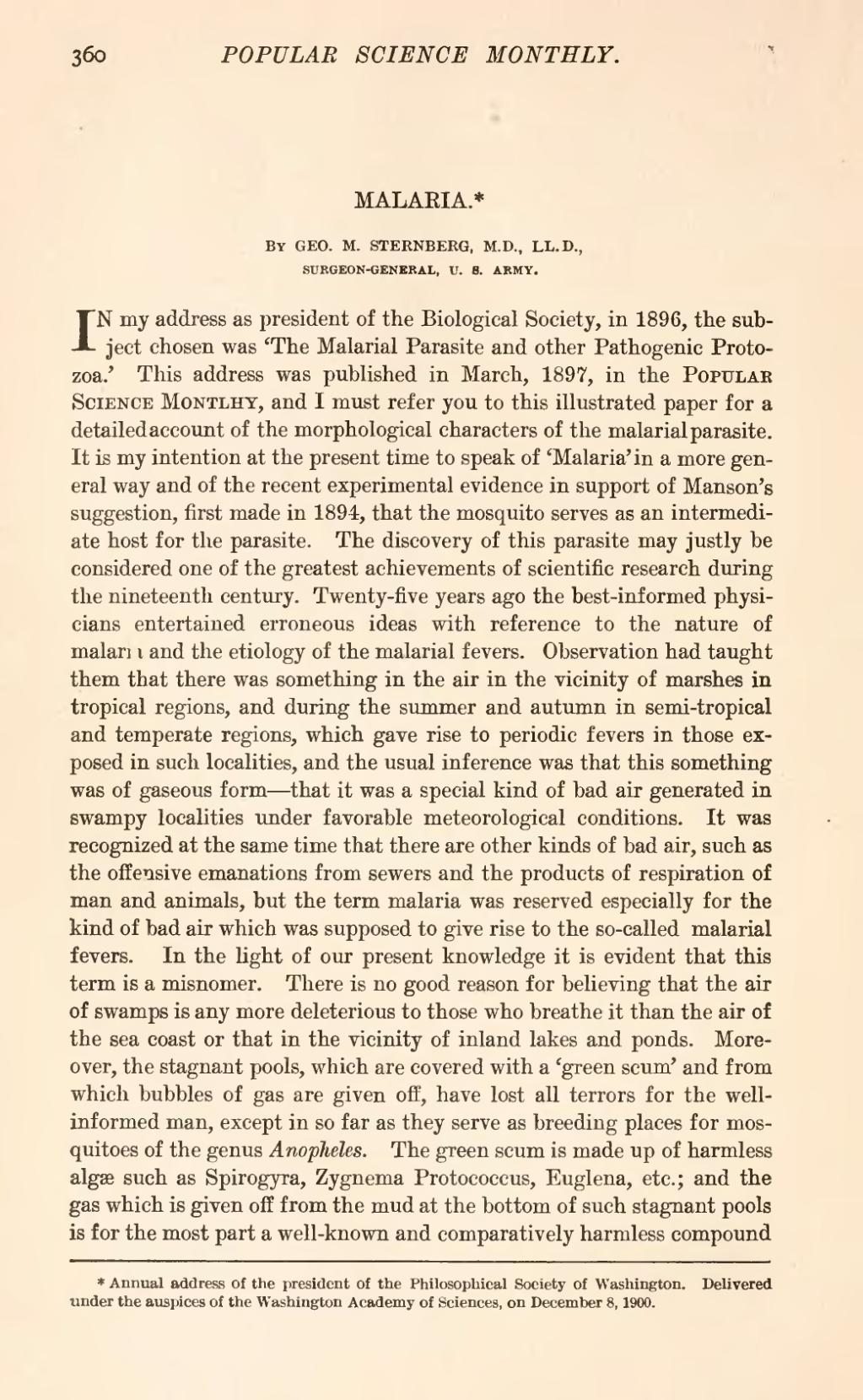| MALARIA.[1] |
By GEO. M. STERNBERG, M.D., LL.D.,
SURGEON-GENERAL, U. S. ARMY.
IN my address as president of the Biological Society, in 1896, the subject chosen was 'The Malarial Parasite and other Pathogenic Protozoa.' This address was published in March, 1897, in the Popular Science Monthly, and I must refer you to this illustrated paper for a detailed account of the morphological characters of the malarial parasite. It is my intention at the present time to speak of 'Malaria' in a more general way and of the recent experimental evidence in support of Manson's suggestion, first made in 1894, that the mosquito serves as an intermediate host for the parasite. The discovery of this parasite may justly be considered one of the greatest achievements of scientific research during the nineteenth century. Twenty-five years ago the best-informed physicians entertained erroneous ideas with reference to the nature of malaria and the etiology of the malarial fevers. Observation had taught them that there was something in the air in the vicinity of marshes in tropical regions, and during the summer and autumn in semi-tropical and temperate regions, which gave rise to periodic fevers in those exposed in such localities, and the usual inference was that this something was of gaseous form—that it was a special kind of bad air generated in swampy localities under favorable meteorological conditions. It was recognized at the same time that there are other kinds of bad air, such as the offensive emanations from sewers and the products of respiration of man and animals, but the term malaria was reserved especially for the kind of bad air which was supposed to give rise to the so-called malarial fevers. In the light of our present knowledge it is evident that this term is a misnomer. There is no good reason for believing that the air of swamps is any more deleterious to those who breathe it than the air of the sea coast or that in the vicinity of inland lakes and ponds. Moreover, the stagnant pools, which are covered with a 'green scum' and from which bubbles of gas are given off, have lost all terrors for the well informed man, except in so far as they serve as breeding places for mosquitoes of the genus Anopheles. The green scum is made up of harmless algæ such as Spirogyra, Zygnema Protococcus, Euglena, etc.; and the gas which is given off from the mud at the bottom of such stagnant pools is for the most part a well-known and comparatively harmless compound
- ↑ Annual address of the president of the Philosophical Society of Washington. Delivered under the auspices of the Washington Academy of Sciences, on December 8, 1900.
